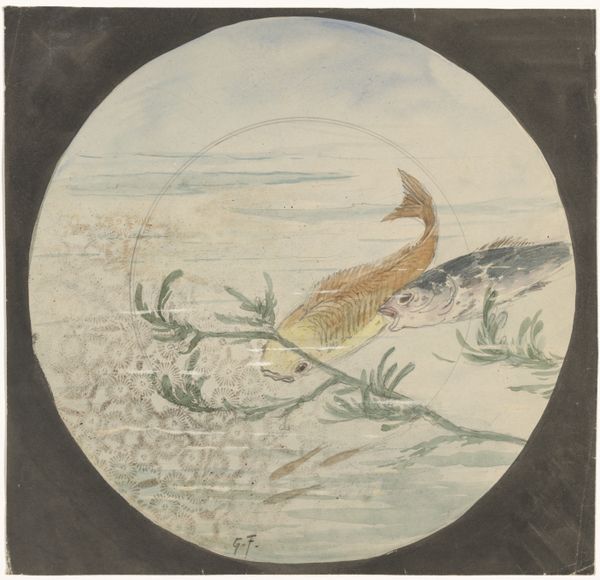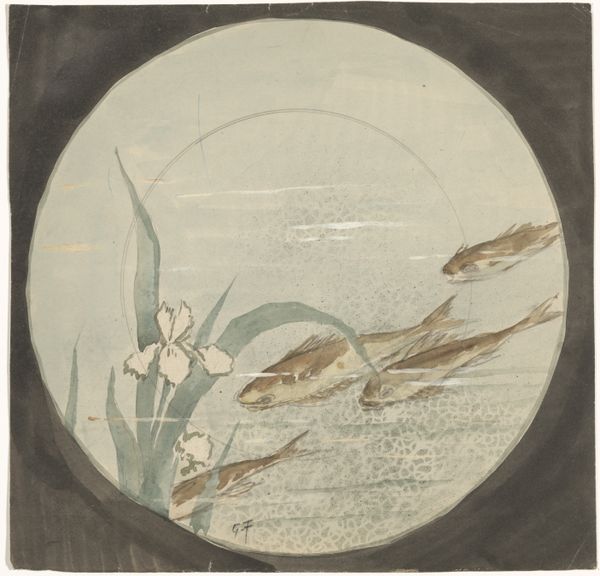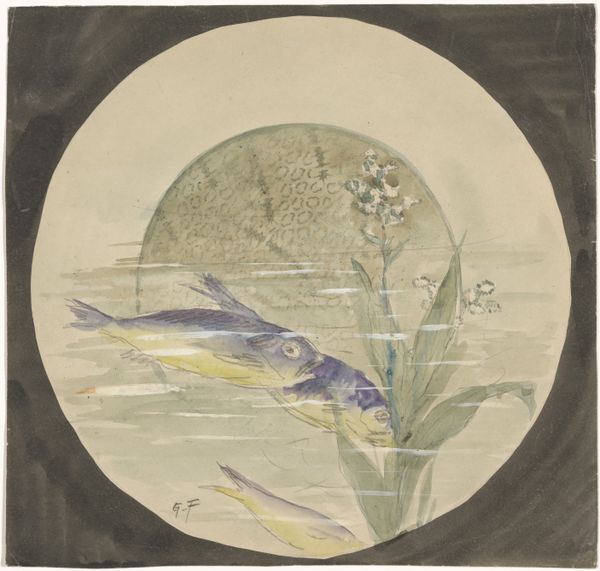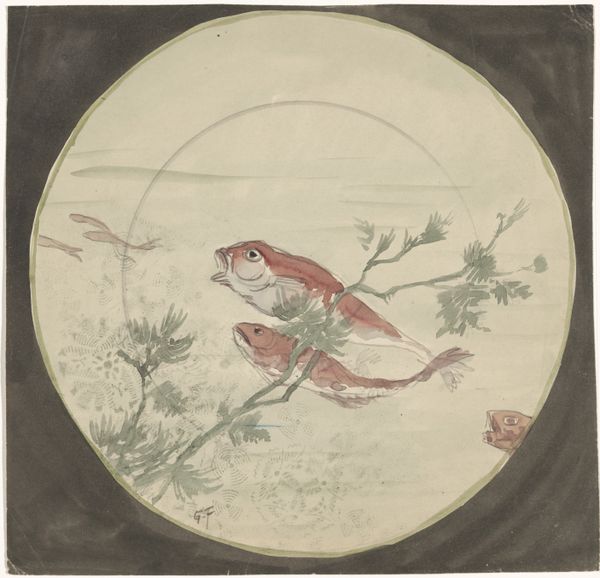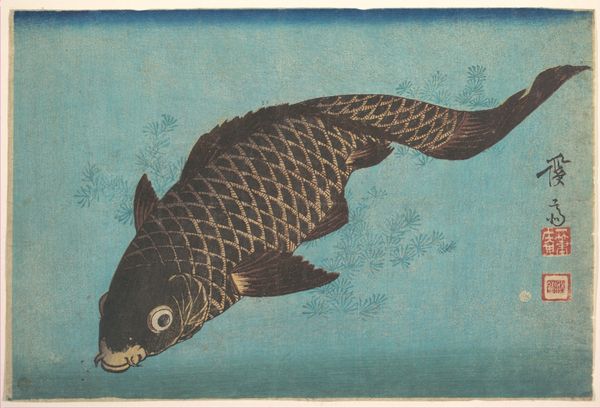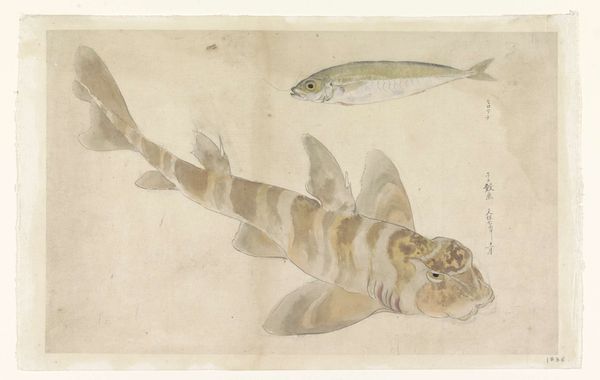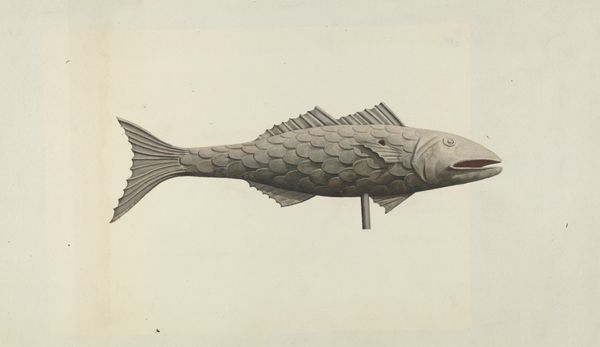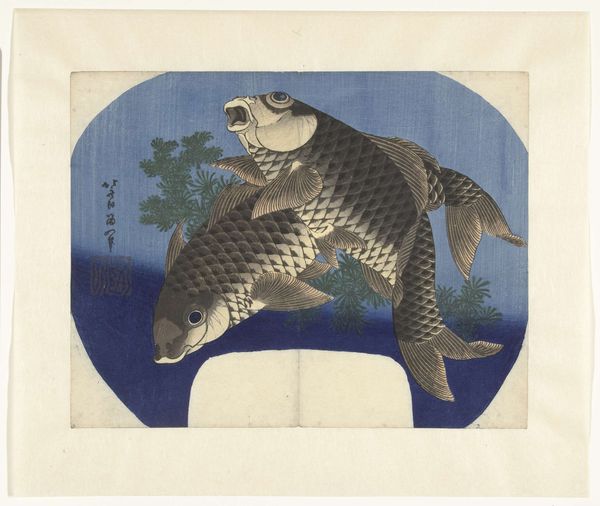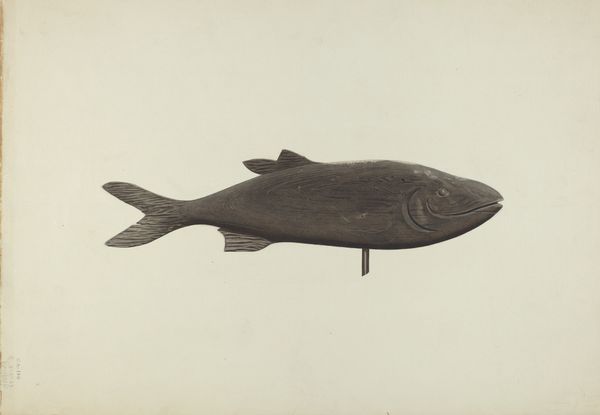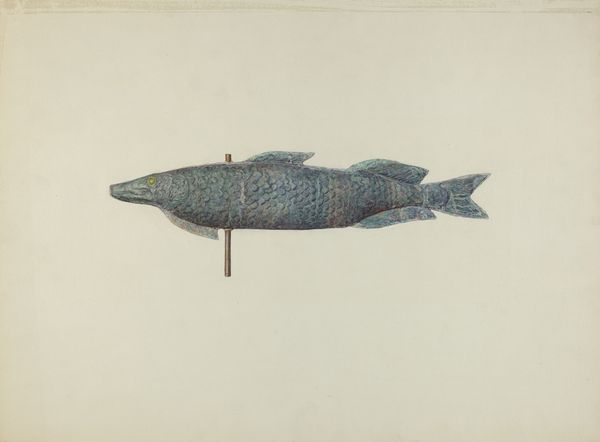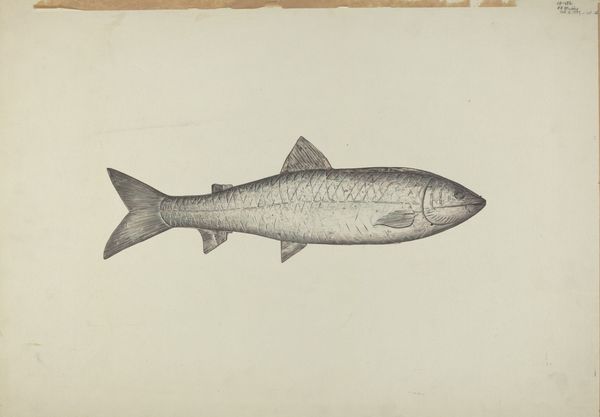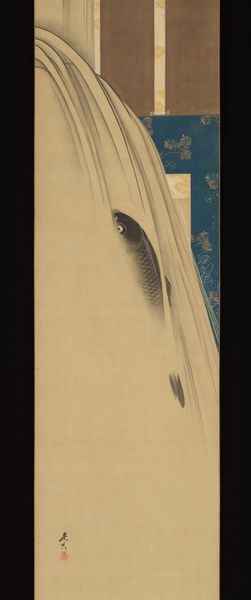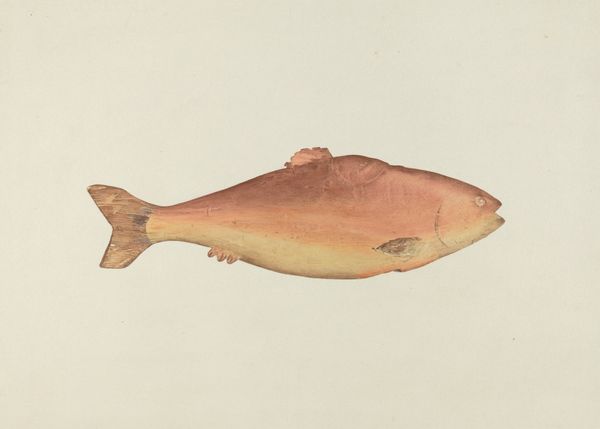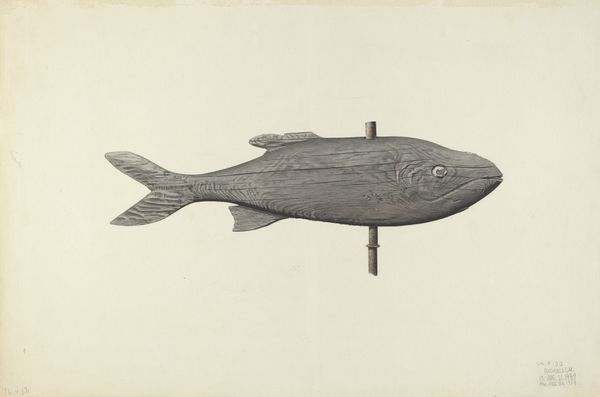
Ontwerp voor een bord met twee blauw-gele vissen bij waterlelies c. 1875 - 1890
0:00
0:00
drawing, paper
#
drawing
#
water colours
#
figuration
#
paper
#
coloured pencil
#
japonisme
Dimensions: height 239 mm, width 249 mm
Copyright: Rijks Museum: Open Domain
Gustave Fraipont created this design for a plate using watercolor and pencil. Here, we see two blue and yellow fish swimming amongst water lilies. The watery medium lends itself naturally to the subject matter, doesn’t it? The design is not a study for fine art, but rather for mass-produced tableware. This tells us a great deal about Fraipont’s practice, reflecting the shift in the 19th century towards industrialization and the commodification of art. The design would have been transferred to a ceramic surface, where artisans would then apply the colors through a mechanical process. Think about the number of plates that might then be produced, each bearing Fraipont’s design. While it's easy to see the hand of the artist in this original drawing, it's also important to recognize the many hands involved in its eventual distribution. This highlights how the value of art can shift depending on the context of its production and consumption. It asks us to reconsider the role of the artist in a world increasingly shaped by industry.
Comments
No comments
Be the first to comment and join the conversation on the ultimate creative platform.
